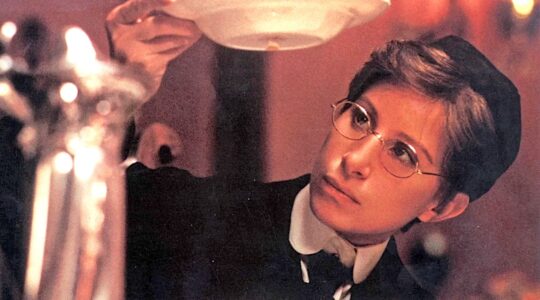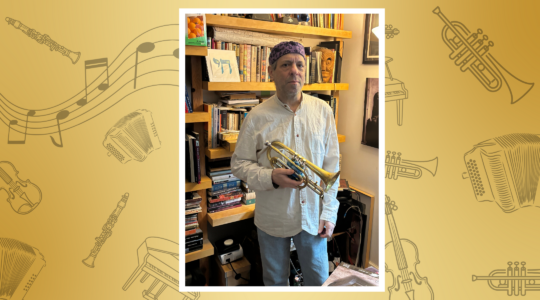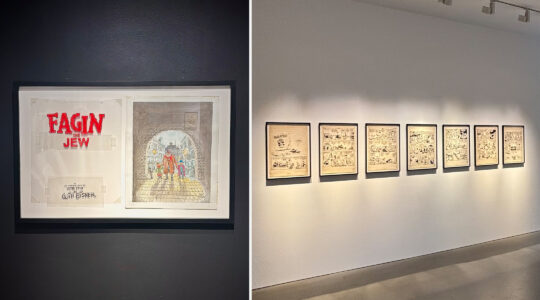Publishers Weekly, in its review of the fascinating new book “The Butcher’s Tale: Murder and Anti-Semitism in a German Town” (Norton), notes somewhat offhandedly that “although classed by the publisher as history/Judaica, this powerful volume will also appeal to true-crime readers…”
True crime. That’s as good a description of modern European Jewish history as anything I have seen. Except that anti-Semites always believed that the “true crimes” were committed by Jews against non-Jews, whereas in fact the real crimes were committed against Jews by non-Jews. The ritual murders were always false; the riots, beatings and killings that followed in their fictional wake were inevitably true.
But one could also suggest that European Jewish history be classified under another, seemingly opposite genre — fairy tale. By fairy tale I don’t mean Walt Disney. I mean the Brothers Grimm, the German storytellers whose stories of cannibalism and expendable children suggest a bloody chaos just below the surface of things. Author Helmut Walser Smith explains in “The Butcher’s Tale” that the narrative of Jewish ritual murder was a kind of peasant fairy tale, bereft of facts but suffused with fears, projections and unconscious wishes. Moreover, he suggests that the Blood Libel was the flip side of the Christian anxiety over their own ritual murder — the drinking of Christ’s blood every Sunday morning during Communion.
“The Butcher’s Tale” is a compulsively readable work of forensic-cultural history that explores, in minute detail, how the brutal dismemberment of a Christian adolescent in the German town of Konitz in 1900 quickly unearthed an ancient, visceral belief in Jewish ritual murder. The town’s Christian butcher blamed his Jewish counterpart for the crime, his story becoming the Butcher’s Tale of the book’s title, and a series of pogroms soon followed. Without the intervention of the Prussian army, who knows if anyone in the Jewish community would have survived the city’s wrath.
Smith, a historian at Vanderbilt University, explains that despite our difficulty in studying 20th-century European history without reference to the Holocaust, for the Germans of 1900 “Auschwitz was literally unthinkable. The claim that within half a century their country would start two world wars and attempt to annihilate a people, some of whom were their neighbors, would surely have stretched their credulity and aroused their indignation.” This is a sober and perhaps defensible position, predicated on his belief that the collective Jewish and non-Jewish reality was “contradictory and contingent — marked as much by the possibilities of hopeful development as by the portentous signs of calamity.” But this view doesn’t fully take into account his own evidence — a collective European imagination that, up until then, had demonstrated almost no resistance to its own storytelling momentum. It’s a slippery slope from Hansel and Gretel and the eating of Christ’s body and blood to Jews accused of eating Christian children, and then to throwing the Jews themselves into the ovens.
Where the European imagination would eventually lead one man already seemed to know — Franz Kafka. While the popular press and the rumor mill dwelled, at the turn of the 20th century, on Jewish murder on a small scale, Kafka had tapped into a darker and deeper European unconscious, already imagining a centralized, soul-less, dystopic future that all but came true for the Jews. String together his vision of a Jew having become a vermin (“The Metamorphosis”) with a bureaucrat tinkering with a torture device (“In the Penal Colony”) and a state using its organization and efficiency to hound to death an innocent man for the most irrational of reasons (“The Trial”) and you have the Holocaust, one generation early.
If “The Butcher’s Tale” was the opening shot of the 20th century, “The Pilot’s Tale,” so to speak, was its coda. I am referring to 9-11, and the widely believed idea in the Arab world that the Mossad engineered the destruction of the World Trade Center to further Jewish control over the world. If the Europeans believed the Jews would kill anyone to continue their horrific rituals and lifestyle, many Arabs go a step further, suggesting Jews will even kill themselves — the financiers who populated the World Trade Center, for instance — in order to reach their nefarious goals. It seems the Arab world may be just as imaginative as Europe, and its storytelling machine has now ramped up to its full force.
Smith notes that the invention of the printing press and a newly educated Germanic population may, tragically and ironically, have accelerated and reinforced myths like the Blood Libel, since these stories now had the appearance of “literature,” and a good many people could read about them in black and white. One wonders if the Internet and cable television, especially Al-Jazeera, are now playing a similar role in the Arab world. While Israelis are certainly not powerless, and are not entirely blameless for the situation that now confronts them, it seems that many Arabs are busy imagining Jews dedicated to nothing but the persecution of innocents. I haven’t read many Arabic fairy tales, but I hope for Israel’s sake that they aren’t as bloody and savage as what Europe produced.
Daniel Schifrin, whose column appears the fourth week of each month, is at work on his first novel.
The New York Jewish Week brings you the stories behind the headlines, keeping you connected to Jewish life in New York. Help sustain the reporting you trust by donating today.




